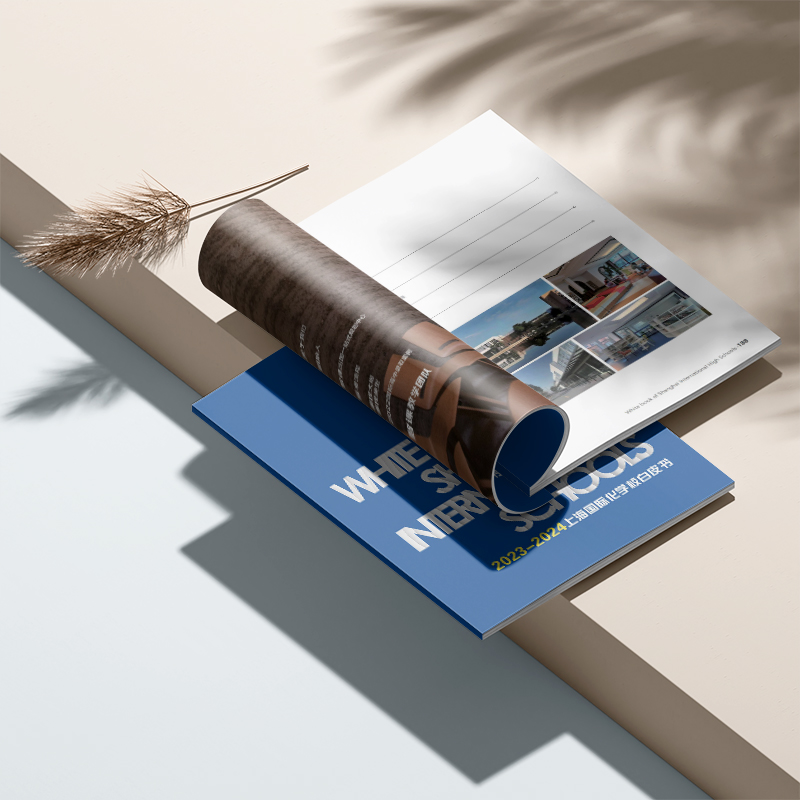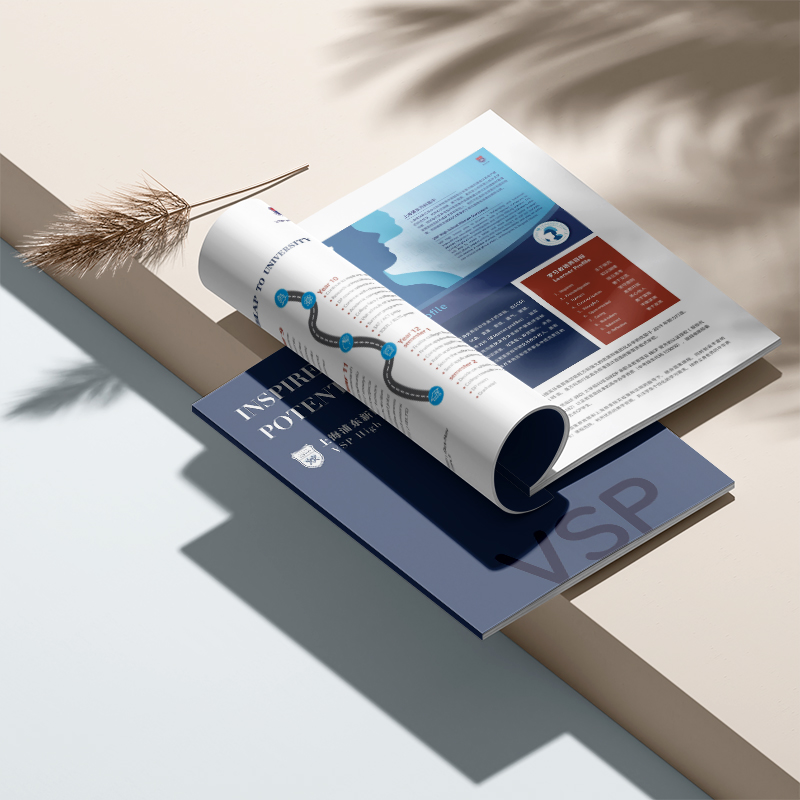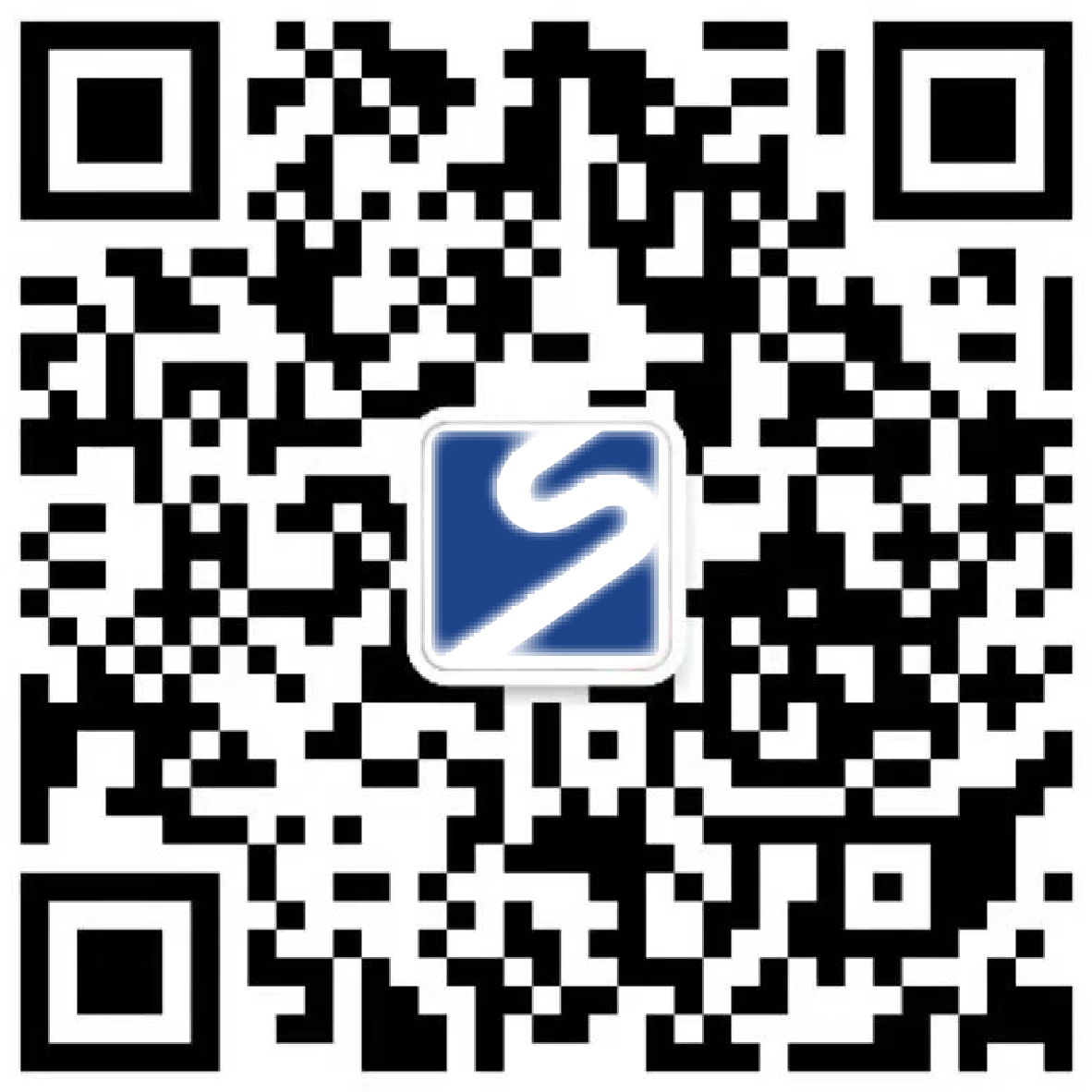Don't let the "revised draft" drag you down! Get done with the design and production of corporate albums, these points really work!
Hey, do the bosses who make picture albums and the partners in the marketing department often encounter this kind of "sour" moment? The copywriting was passionately written and the design was beautiful. As a result, the customer looked at it and said, "Well... the text is a bit dense... the key point is not coming out... this feeling... is not right?" Then, it was a long "tug-of-war", which changed and changed. Time was gone, patience was polished, and the picture album was still lying in the computer "difficult to give birth". Don't rush! Today, let's talk from the bottom of our hearts about how to make the design and production of corporate brochures smooth and smooth, and make good brochures that can really help you!

The pain point is revealed: Why are copywriting and design always like "cross-service chatting"?
Think of that familiar picture:
Copywriter A: "Look! This edition of copywriting is thoroughly written about where our technology is great and how recognized by customers! Professional enough!"
Designer partner B: "Don't worry! The layout is absolutely tall, blank, high-grade gray, and the international style starts!"
Customer C: (turning over a few pages, frowning) "The data is quite complete... but it looks a little tiring? It's dusty... Don't we want to express that technology is very warm? Why does it feel cold..."
What's the problem? In the final analysis, the design and production of corporate brochures should be an integrated job, but the result often turns into two lines of "copywriting belongs to copywriting, design belongs to design":
Everyone speaks his own words, and the goal goes astray: the copywriter is immersed in code words, thinking that "the information is completely incomplete, and the literary talent is good or not"; Focus on the design of beautiful pictures, thinking about "whether the layout is beautiful or not, and whether the tonality is high or not". Neither side really sat down to talk: What do you want the viewers to remember and feel about this picture album? The word "tall" may look completely different in everyone's mind!
Too much information VS layout is too "empty": copywriters always feel that "this highlight can't be less, and that advantage has to be written down" for fear of missing it; Designers also pursue "breathing sense" and want to make the layout comfortable. And the result? Either the words are crowded like ants moving, making people dizzy; Either the layout is "ethereal" and the key information can't be found.
"Feeling" is too difficult to unify! "Be high-end and atmospheric" and "be young and energetic"... These words may be far from being understood by copywriters, designs, and customers. There is no "visible and tangible" standard, so just talk to chickens and ducks.
The revision of the draft is a "bottomless pit": "It feels wrong", "Adjust the style again", "The focus is not prominent"... This kind of vague feedback makes the designer want to scratch the wall! After changing and changing, time flows away, the team is exhausted, and the album still can't be finalized. Heart tired!

Tips for efficient collaboration: Let copywriting and design work "hand in hand"!
Want to cross the hurdle of "finalization"? The key is to regard the design and production of corporate brochures as a "overall project" of teamwork, rather than two separate things. Try these tricks:
Align first at the start: the same goal is the most important thing!
Three questions of the soul, you must talk when you start: Who should I show this album for? (Accurate portraits, such as investors or end customers?) What do you want them to know most? (Core advantage, don't exceed 3 points!) How do you want them to feel after reading it? (Is it trust? Is it cool? Is it warm?). When we design and produce albums, we have to pull customers and teams to talk about these three issues thoroughly as soon as we come up!
"Feeling" Visualization: Make a Mood Board! Don't just say "high-end atmosphere" with your mouth! Find pictures! Find the color! Looking for fonts! Even look for the texture of the material! Turn the "feeling" you want into something you can actually see. In this way, the copywriter knows which direction to write, and the design also knows which style to do it, so as to save the later quarrel about "this blue is not the blue I want".
When writing a copy: with "layout" in mind
Write copywriting like building blocks: divide the content into clear small pieces (for example: how good our family is/how strong the product is/customers say yes/why choose us). Each block distills an eye-catching title, short and powerful illustration, key numbers or icons. When I wrote, I thought: How much space does this piece take up in the album? What picture can it be accompanied?
Give the designer a "small note": boldly mark in the copy draft: "Here's a big product picture to be handsome!", "This data is more intuitive to make a chart!", "Customers praise us for this sentence, we have to highlight the emphasis!". Give designers clear tips to make it easier for them to get your points. Good corporate brochure design and production, copywriting must have a "sense of picture" from the beginning!
Designer's shot: a "good partner" for copywriting
Let the key points "jump" out by themselves: clearly separate the "primary and secondary" information with headlines, subheadings, colors and blank spaces. Readers sweep their eyes, look at what they look at first, and their hearts are clear. The core task of the designer is to let the people who read the album grasp the key information easily and happily!
Pictures and texts are born to be a pair: pictures and charts are not used to make up numbers! They have to "sing in harmony" with the words next to them to tell the story more clearly and powerfully. A good picture, I'll talk to you for a long time.
Content is the "boss": when the cool layout "fights" with key information, decisively protect the information! The album is for people to see, and it is more important than anything else to understand and remember it. Don't let the fancy design steal the content play.
Collaboration has skills: run fast in small steps and avoid detours
Don't wait for "everything to be written" before designing: after writing the core part of the copywriter, you can throw it to the designer to start work. The appearance of the design can also inspire the copywriter and optimize the content behind it. Efficient corporate brochure design and production must be "you have me, I have you", and adjust it while doing it!
Regularly "check the table": Don't wait until it's all done before showing it to the customer! Look at it in stages: Is it right to look at the style direction first? Let's see if the core content is arranged clearly? Every time you focus on a small target, the feedback is more accurate.
Feedback should be "human words": stop saying "it feels wrong"! Guide everyone to say specifically: "On this page, I hope users will see XX at first glance, but it doesn't seem obvious now?" Or "This blue color, do you want the sense of calmness like reference figure A, or the sense of technology like B?". The more specific, the more efficient the modifications are.

Super practical collaborative action list (follow it, worry-free!)
Start-up meeting: Customers, copywriters, designers, none can be missing! Talk thoroughly about the "Three Questions of the Soul", do a "mood board" together, and explain the process and time clearly.
Preliminary study of style copywriting skeleton: copywriting first sets up a large shelf of content (table of contents/core module); According to the shelf, the designer quickly puts out 2-3 style samples (1-2 inner pages on the cover). Make a quick clapper style in a small range and set the main tone!
Piece by piece, adjust as you do it: after the copywriter has written a piece of content, it will be handed over to the design to arrange it. After arranging a piece, everyone will meet quickly to see the effect. If there is no problem, continue. If there is any problem, adjust the direction in time. Advance like a puzzle.
The first draft is combined, focusing on "physical examination": all modules are combined into a complete first draft. The focus of this meeting is: Is the overall style unified? Is the core information eye-catching enough? (Think about customers getting it, can they be attracted in the first 3 seconds?) Key advantages, bullish data, are they outstanding?
Refined beauty: According to specific and clear feedback, make fine adjustments: Is the word bigger or smaller? Is the color darker or lighter? Change the picture? Refine the copywriting in two more sentences? Dig into details and produce high-quality products.
Perfect ending: Finally, carefully check (text, pictures, layout), confirm the printing process, and hand over the beautiful finished documents!

The design and production of corporate brochures is really not just as simple as putting words and pictures together. It is your important opportunity to shout out to the world about "who I am" and "how awesome I am"! It is a work of art that perfectly combines the "soul" of copywriting and the "beauty" of design. The secret of "difficulty in finalizing"? It is to deeply understand: this picture album is to help you get customers and win business! When copywriting and design are in the whole process of corporate brochure design and production, the goal is truly consistent and closely coordinated; When the feedback is clear and specific, and the modification is efficient and accurate, those headaches of repeated tossing and ineffective overtime can be greatly reduced. What comes out in the end will never be a "make-do" picture album, but a super marketing helper that can accurately impress target customers and effectively convey your brand value!
Choose one that really understands collaboration and is efficientDesign and production of corporate brochuresPartners (such as us!), Let your album no longer eat ashes in the corner, but be active in the hands of customers and at the negotiating table, and really help you open up the market, win trust and create value! Don't let poor communication delay your good products and services, embrace efficient collaboration methods, let your corporate story be seen and remembered, and let customers take the initiative to contact you!



